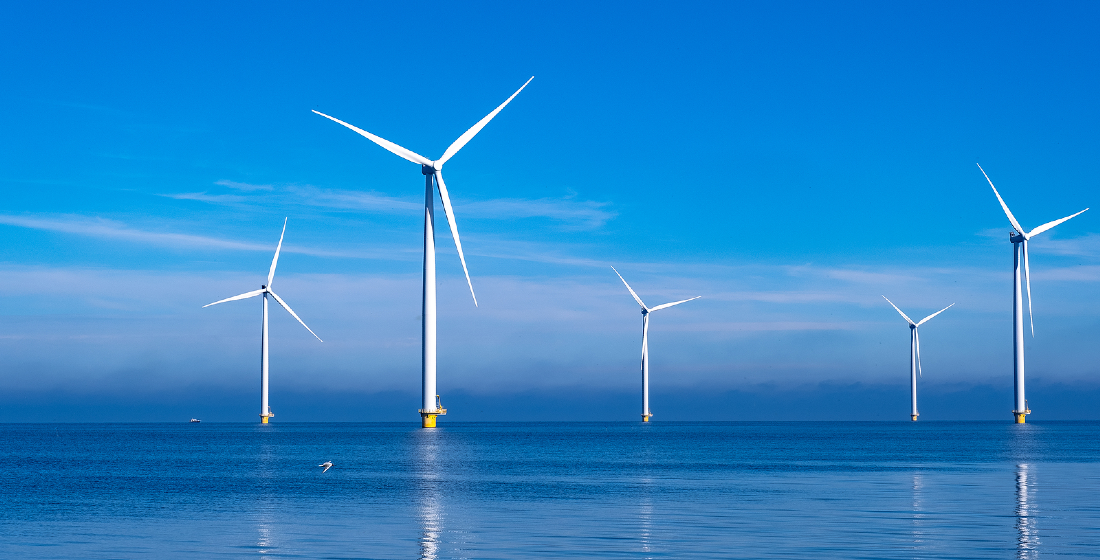Does US BESS need the IRA's supercharging?
The Inflation Reduction Act adds a significant tax incentive to the US battery storage market. Participants are excited about the impact on a market that was already growing at breakneck speed – so much so that capacity issues are creating a short-term constraint. But is the long-term direction of travel guaranteed?

In the past two years, the size of battery storage capacity has soared. So much so that market participants feel the need to provide ‘warnings’ before citing the bare statistics: “It’s hard to understand just how exponential the growth has been,” says Denis Wamstead, who is an energy analyst for the IEEFA, before sharing some raw figures: “At the end of 2020, there was 1,438 megawatts of installed battery storage in the US. By the end of 2021 it had grown to 4,600 megawatts, and after the first six of this month it has reached 7,000. So in less than two years the market has gone from 1,500 to 7,000”.
Wamstead adds that the IEEFA doesn’t do projections but others do, and he seems to think they could be on point. Take Wood Mackenzie’s latest Global Energy Storage Outlook: it suggests a target of 500GW by 2031 of battery storage, with 75% of capacity due to the US and China (a proportion that the consultancy believes will remain relatively stable). “500GW is just an unbelievably large number,” says Wamsted. “If you go back just five years we had around 5GW globally. And now you have the IRA, which is just adding in another large incentive for growth.”
The battery storage Sp-IRA-l
As Wamsted notes, the US Inflation Reduction Act (IRA) adds another driver into the mix. Previously, renewables projects – including hybrid power projects that incorporated integrated battery storage facilities – could qualify for a 30% tax write-off on capital expenditures. Now the IRA extends this tax break to standalone battery projects. The standalone projects are still a small part of the total battery power market, but they are growing, taking advantage of niches in certain markets – either to help regulate transmission flows or – increasingly – to arbitrate tariff variability in markets that have large differentials between load supply and, subsequently, pricing between peak and off-peak rates.
“The IRA has been the focus for the battery industry and to get that legislation enacted is a huge benefit – and a bit of a surprise,” says Dan Shreeve, global head of energy storage at Wood Mackenzie. He adds that his consultancy’s base case estimate for 2022 capacity growth in the US, which is for 120GW of additional capacity, included legislative drivers that had been part of the Democratic proposals. However, he said he had been thinking about whether to move towards the consultancies bear case – 100MW – a scenario with no additional tax support for the industry. Now the upside, bull case of 135GW is the more likely revision.
The excitement about the direct impact of the IRA is well founded. Despite the radically improving economics of renewable power in general, one of the biggest drivers of the entire industry has been the tax incentives provided by the federal government: “The federal ITC [Investment Tax Credit] has had an important impact on financing solar and storage projects, particularly early on as the capital cost of adding storage absent the ITC made it difficult for solar-and-storage projects. Capital costs for storage have fallen significantly in recent years, though the ITC remains an important driver for financing,” says Jane Rueger, a legal expert in renewable power generation and partner at Perkins Coie LLP in Washington DC.
And Rueger notes that beyond tax incentives the US power market is being nudged towards a renewables-based future by a wider range of supporting legislation and regulation. “There are also several other regulatory and market drivers that are expected to lead to further growth in storage in the US. First, in parts of the country where coal-fired generation is prevalent, such as in the Midcontinent Independent System operator or MISO, and to some extent PJM (the Atlantic-based transmission system that incorporates at least part of 13 eastern US states) retirement of many of those baseload units presents opportunities for storage, she says.
“In MISO alone, announced coal retirements have been estimated to be about 27GW by 2030. A healthy amount of capacity to replace those retiring units is expected to come from intermittent renewable generation, which suggests a market for co-located storage to “time shift” deliveries (which also helps developers manage basis risk). Similarly, in markets like California where renewable energy already accounts for a significant proportion of capacity, and there is strong policy support for achieving 100% carbon-free energy in the next 25 years – in California, the current target is 100% carbon-free energy by 2045 –long-duration storage is viewed as a significant part of the solution in achieving those goals.”
Every silver lining
However, before looking at specific deals and segments of battery storage – as well as specific regional markets (for example, Texas is a fascinating growth case study) – there is another industry trend that needs to be incorporated into the macro vision. And this is more of a mixed blessing: the production capacity of batteries and (of course related) the mining production capacity of necessary commodities for these batteries.
Because while demand for industrial-scale batteries for the power industry may be growing they still make up a much smaller part of the total battery production industry, which is dominated by batteries for electric vehicles (EVs). The rapid growth in demand for batteries for EVs has capped the production capacity for industrial battery users – though while competing for production capacity they have boosted the industrial use case by improving the fundamental technology.
“The price of battery storage has come down significantly in the past ten years. And for that we really have to tip our hat to Mr. Musk at Tesla for driving the development of electric vehicles which in turn drove the development of batteries for electric vehicles,” says Wamsted. “Will we have some supply constraints? Yes. Will they lead to some slippage in adding battery capacity in the short-term? Quite possibly. But will it change the ultimate destination? No. Supply constraints are a hindrance but not a blockage.”
Wamsted also adds that with the added financial incentives, the improved economics will be a spur to innovation on the supply side – not just to improve capacity to meet growing demand for industrial batteries, but also in developing new technologies that avoid certain metals that are either in short supply or, as in the case of cobalt, typically come from origins that undermine the ESG thesis of renewable power.
Wood Mackenzie’s Shreeve points to sharp increases in the cost of batteries, given the supply constraints and rising demand: “Supply remains extraordinarily tight and so the price for these batteries is up year-over-year,” he says. “We have definitely seen pricing come up from 2020/2021 levels. I tell people from where our original 2020 forecast was, versus where we are today, there's about a 25% delta in terms of what our expectation was.”
He adds that he expects some relief to pricing between 2023 and 2024, where “we should see some relief and pricing of battery cells. However, that said, the trajectory of our cost reduction has also been made more shallow by reality coming into play with respect to how long it's taking to deploy critical mineral extraction and processing sources. It’s definitely a major concern.”
Financing
The incredible headline growth of US battery storage includes multiple different use cases, from incorporation in hybrid power projects to different uses for standalone installation, and each has important financing implications. “One of the biggest issues remains defining and evaluating the revenue streams from storage, which are often quite different from traditional generating facilities and vary significantly by market,” says Reuger. “The uses for storage can vary by market, which in turn varies the economics – in some markets like PJM, the focus has been on frequency response; in other markets like California and ERCOT, the focus has been on peak-shaving during periods of extreme energy prices. These dynamics make the evaluation of a project’s economics more complex.”
As Rueger notes, the use of standalone batteries varies considerably. The first in the US came in PJM to help the utilities regulate the 60MHz frequency. However, today there are much more commercial applications of standalone batteries. Wamsted says that in Texas, for example, about 2,500MW of battery capacity is synchronized with the grid, most of it designed with just one hour of duration to take advantage of high prices at the peak demand hour. In California, by contrast, batteries must have four hours of duration to meet the state’s resource adequacy requirements. “That's beneficial for the utility, which then doesn't have to run big combustion turbines that typically run at peak periods of time. You know, they'll run for, you know, two hours a day or maybe four or five hours a day, but they don't run very often, and they're not terribly efficient,” says Wamsted.
Broad Reach is one of the best examples of standalone batteries being deployed at scale. In mid August this year, Broad Reach which owns a 21GW portfolio of utility-scale battery storage and renewable power projects across the US, announced it successfully closed a $160 million project financing for 17 operating battery energy storage systems in Texas and one in California. Totalling 390MWh, the projects being financed are front-of-the-meter, utility-scale assets using lithium-ion technology from a diverse pool of manufacturers. Broad Reach develops and operates its battery storage projects to perform under an optimized revenue stack, which includes a combination of contracts, financial hedges and merchant capacity selling energy and ancillary services in the market.
Deutsche Bank and MUFG were coordinating Lead Arrangers and joint bookrunners for the financing. MUFG was administrative agent and Deutsche Bank Trust Company Americas acted as depository bank and collateral agent. “Deutsche Bank and MUFG have both been great partners in leading this financing and we appreciate their support of Broad Reach’s efforts to lead the U.S.’s energy transition in battery storage development”, said Nitin Gupta, senior vice president, finance and M&A at Broad Reach Power in a press statement. “This is a marquee debt financing transaction in the battery storage sector, and we at Broad Reach look forward to advancing innovative ways to finance our large pipeline of projects.”
These standalone battery investments are largely possible due to the comparative costs of other sources of power for these short-term peak hour needs. In a pure cost basis, the batteries are as efficient as running combustion turbines for a couple of hours a day, which is inefficient, and they also provide a non-hydrocarbon source of short-term power to the grid to help on ESG goals. For example, in August this year, Energy Vault announced that it would deliver a battery energy storage system (BESS) for company Jupiter Power in both Texas and California, worth a total of 220MWh.
However, while the standalone uses of batteries will continue to grow, the lion’s share of total installed capacity is still likely to come through batteries as part of hybrid renewable power projects. This is particularly the case in hybrid solar projects – the generation of solar projects fits more neatly with battery storage capacity than wind power, though there are some examples of the latter.
For Wamsted, the Gemini hybrid power plant being built by project developer Primergy and led by investment manager Quinbrook Infrastructure Partners in Nevada is a good example of the way that the US power industry is evolving with regards to battery power. The utility has signed a 25-year PPA to buy the project’s solar power at $26/MWh, but there is also a four-hour daily ‘window’ in which the utility is contracted to buy battery delivered power for ~$150/MWh. In April this year, the project secured $1.9 billion in debt and equity and is one of the US’s biggest solar-plus-storage deals to date. “Blended together the rate is ~$44/MWh and that’s a pretty darn good deal,” says Wamsted.
The lead arrangers on the $1.3 billion debt financing are Keybanc Capital Markets, MUFG, Bank of America and Nortdeutsche Landesbank Girozentrale, while Voya Investment Management arranged the $95 million mezzanine debt facility. Meanwhile Bank of America and Truist Bank arranged the $532 million of tax equity financing.
Texas also shows the incredible strength of renewable power growth in the US. The southern US state is one of the few that is seeing strong total load demand growth – and yet renewable power is not just growing in nominal terms – it is taking market share away from traditional thermal sources. In the first six months of this year Texas generated around one-third of total electricity from renewable sources.
Today Texas has 15,000MWh of solar capacity, up from nothing five years ago, and much of that growth is being driven by out-of-state customers. Corporates are increasingly signing ‘virtual power agreements’, such as the one Starbucks signed with Terra-Gen, which enables companies to say they have created enough renewable power to run entire operations, even if the energy is not specifically being used by the business. The deal, signed by Starbucks in December 2020, is tied to a 1,200MW solar project that is combined with energy storage that can deliver 2,164MWh before needing to be recharged.
A virtual PPA is a financial deal under which the buyer pays a set price but does not directly buy electricity from the project. Power from the project is sold into the wholesale market. If the wholesale price is higher than the price in the virtual PPA, the offtaker receives the difference. If the price is lower, the offtaker pays the facility owner to make up the difference.
Needle points north
In short, there are a lot of drivers that have come together to deliver impressive growth in the US battery market, which along with China is the leader of the industry globally. There is also huge potential for battery storage growth elsewhere in the world – the opportunities in Latin America are just beginning to be assessed and there is hope that regulatory hurdles in Europe will be dismantled. Supply will undoubtably be an issue in the speed of battery implementation, but Wamsted is sure the momentum is unstoppable, whoever holds power in the US and elsewhere. “The direction of travel is 100% certain – nothing is going to change that,” he says. “Utilities have no interest in going backwards – they may not all be moving as fast as I want them to, but they are moving in the direction that I want them to.”





